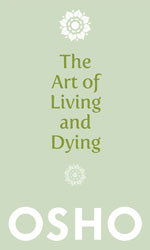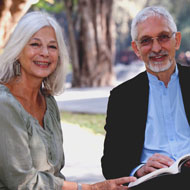Maneesha’s review on a compilation of Osho’s words on death and dying.
 Death is the flavour of the month. I know that at least in the UK and in the US, almost weekly you can find an article on some aspect or other of dying – the right to die, The Living Will (aka Advance Health Directive), the ethics of the English system known as the Liverpool Care Pathway and, of course, the universally available, Death Cafes. Trainings in how to support someone through dying are available in the US and the UK, and there are a multitude of websites and books on various aspects, ranging from the practical to the esoteric.
Death is the flavour of the month. I know that at least in the UK and in the US, almost weekly you can find an article on some aspect or other of dying – the right to die, The Living Will (aka Advance Health Directive), the ethics of the English system known as the Liverpool Care Pathway and, of course, the universally available, Death Cafes. Trainings in how to support someone through dying are available in the US and the UK, and there are a multitude of websites and books on various aspects, ranging from the practical to the esoteric.
The bogey man has ‘come out’; the grim reaper is revealed as not so grim after all. The taboo has been broken, and that can only be a good thing.
As a facilitator of trainings and workshops around living-dying I’ve pretty thoroughly researched what’s out there on the book front. There are a few books that are outstanding, some for their deeply humane and grounded suggestions about being with the dying (I’m thinking of three, the authors all doctors, as it happens). Others are the personal testimonies – of those in their last months/ weeks/ days – of how conscious acceptance of dying can make for an astounding change in not only how one views what is coming but how one lives what is, right now and here.
Having said that, The Art of Living and Dying is clearly in a category all of its own, based as it is on the insights of a contemporary mystic. As those of us familiar with Osho know well, all he has ever said is based on his own experience, his own empirical understanding. For example, only he could announce with any authority that the whole idea of reincarnation is a misconception. Only a Buddha could explain how what continues on beyond the death of your bodymind is not consciousness but your unconsciousness, your misery… and how that attracts others’ miseries because, in being miserable, ‘you are the right vehicle’. At the time he told us that I recall it sending shock waves through the community immediately around him, and it’s still startling to read. Of course he then goes on to remind us that the only way to get out of our misery is through witnessing.
The chapters that feature his responses to questions from the dying are bound, not to comfort – that has never been his way – but to have the reader review her beliefs: ‘Does hell really exist? If God is good, why does death exist? If I drop my beliefs, what will I have to hold onto in death? How can I die celebratively?’, and so on.
There’s a wide-held belief in many cancer-centres that ‘the negative’ – that is, doubts about whether one will pull through, even the mention of the ‘d’ word – is not conducive to healing. In the words of an art therapist who works with the terminally ill, that ethos is promoting ‘the tyranny of the positive.’
So it’s especially relevant that the book includes a question from someone with cancer, who says,
“I believe thinking positively can play a part in getting better…. If I think about the chance of my dying it feels that that is like inviting death; it feels healthier to concentrate right now on living.”
The mystic’s unique advantage is in his having a bird’s-eye view, of being able to see the bigger picture. And, because of that seeing, constantly reminding us of our potential: Freedom.
Characteristically, in his response to this question Osho does not beat about the bush.
“By your choice nothing is changed,” he responds. “That which you choose is a part and that which you are not choosing is also a part of reality. The unchosen part will remain hanging around you, waiting to be accepted…. See both; they are one piece, they are together…. Then you transcend them; you are no longer identified with life and no longer identified with death. When you are not identified you are free, you are liberated.”
 In our presentation of this book in The Hague recently, one of the audience brought up questions about how to be with her dying father. It was brilliant to be able to offer her not only this book but to then guide everyone in a meditative method… a small and very simple technique (see Three-Step Let Go) that she might conceivably be able to take her father through (as well, of course, use for everyone to use for themselves).
In our presentation of this book in The Hague recently, one of the audience brought up questions about how to be with her dying father. It was brilliant to be able to offer her not only this book but to then guide everyone in a meditative method… a small and very simple technique (see Three-Step Let Go) that she might conceivably be able to take her father through (as well, of course, use for everyone to use for themselves).
The book, then, features many insights generally around dying; about the social hypnosis that perpetuates the idea that we do die; the futility of beliefs when we are facing death; facing our fears; questions from the dying and from their carers; how to use pain as a meditation; techniques for acceptance and transformation; and, in the ‘Afterword’, anecdotes about the last moments of the mystics. No book of Osho’s would be wholly Osho without jokes and there is a sprinkling of them throughout.
If there is one book that every household really can’t do without, this has got to be it.
Maneesha James – oshosammasati.org
Related discourse
Beyond Physical and Spiritual Body: Pure Consciousness




Comments are closed.